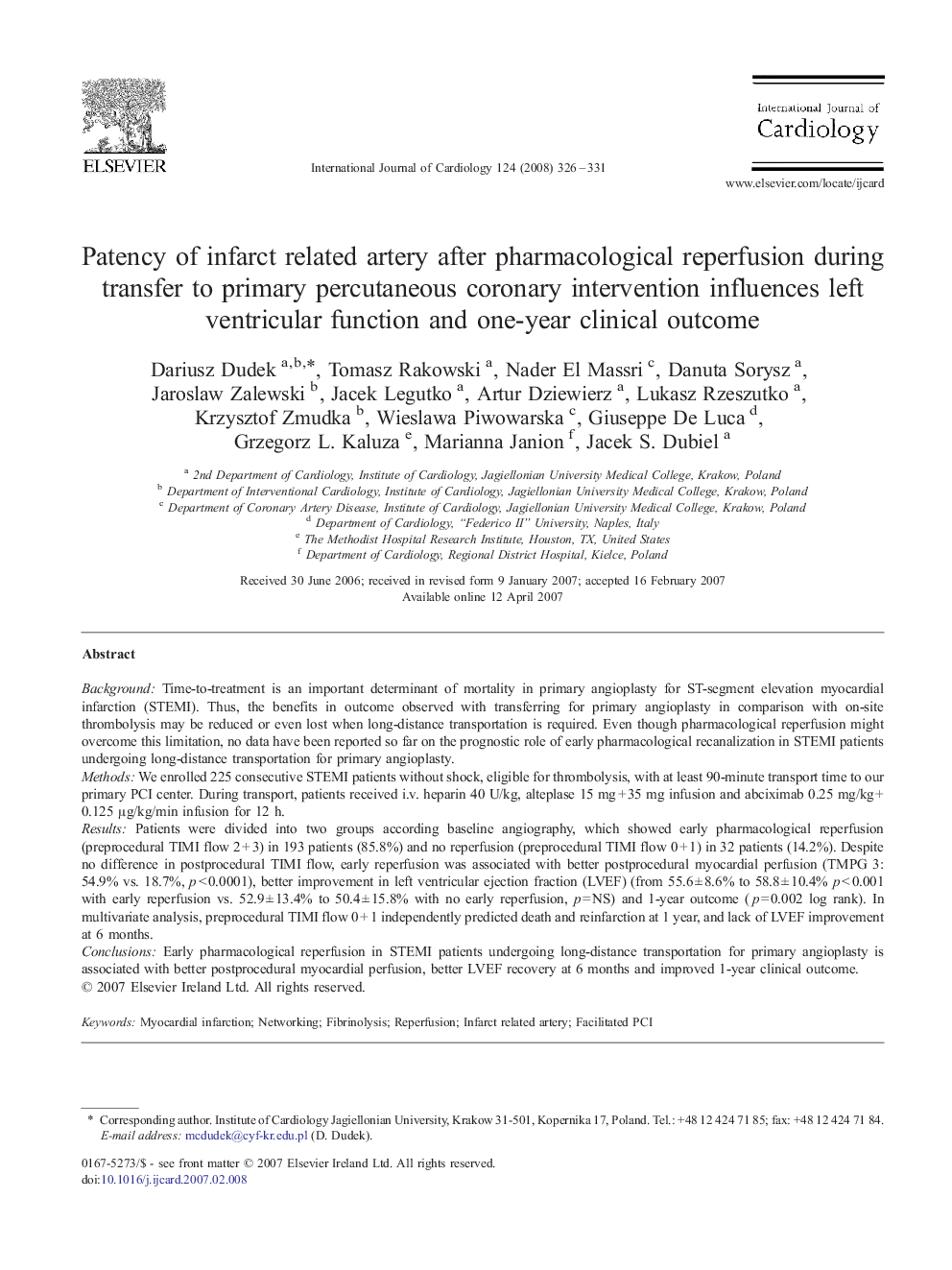| Article ID | Journal | Published Year | Pages | File Type |
|---|---|---|---|---|
| 2934777 | International Journal of Cardiology | 2008 | 6 Pages |
BackgroundTime-to-treatment is an important determinant of mortality in primary angioplasty for ST-segment elevation myocardial infarction (STEMI). Thus, the benefits in outcome observed with transferring for primary angioplasty in comparison with on-site thrombolysis may be reduced or even lost when long-distance transportation is required. Even though pharmacological reperfusion might overcome this limitation, no data have been reported so far on the prognostic role of early pharmacological recanalization in STEMI patients undergoing long-distance transportation for primary angioplasty.MethodsWe enrolled 225 consecutive STEMI patients without shock, eligible for thrombolysis, with at least 90-minute transport time to our primary PCI center. During transport, patients received i.v. heparin 40 U/kg, alteplase 15 mg + 35 mg infusion and abciximab 0.25 mg/kg +0.125 μg/kg/min infusion for 12 h.ResultsPatients were divided into two groups according baseline angiography, which showed early pharmacological reperfusion (preprocedural TIMI flow 2 + 3) in 193 patients (85.8%) and no reperfusion (preprocedural TIMI flow 0 + 1) in 32 patients (14.2%). Despite no difference in postprocedural TIMI flow, early reperfusion was associated with better postprocedural myocardial perfusion (TMPG 3: 54.9% vs. 18.7%, p < 0.0001), better improvement in left ventricular ejection fraction (LVEF) (from 55.6 ± 8.6% to 58.8 ± 10.4% p < 0.001 with early reperfusion vs. 52.9 ± 13.4% to 50.4 ± 15.8% with no early reperfusion, p = NS) and 1-year outcome (p = 0.002 log rank). In multivariate analysis, preprocedural TIMI flow 0 + 1 independently predicted death and reinfarction at 1 year, and lack of LVEF improvement at 6 months.ConclusionsEarly pharmacological reperfusion in STEMI patients undergoing long-distance transportation for primary angioplasty is associated with better postprocedural myocardial perfusion, better LVEF recovery at 6 months and improved 1-year clinical outcome.
